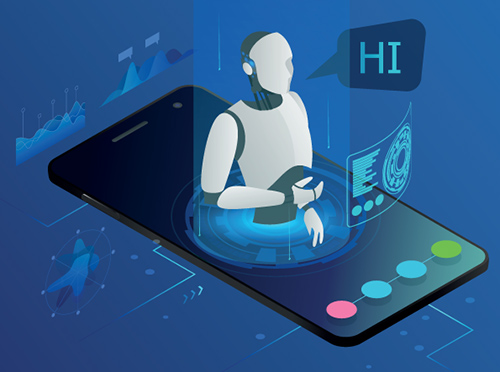Artificial Intelligence, Art, and Inclusion: A Perspective
Research article  Open access |
Available online on: 20 January, 2020 |
Last update: 28 October, 2021
Open access |
Available online on: 20 January, 2020 |
Last update: 28 October, 2021
 We all must have observed that artificially intelligent (AI) systems are slowly taking over tasks previously done by humans. Many processes that are repetitive and simple have already been fully automated. In the meantime, humans continue to be superior when it comes to abstraction and creativity. However, it seems like even when it comes to creativity, we are now being challenged by our own creations. Nowadays AI is taking up the artists’ role in producing unique and ultra-realistic pieces of art.
We all must have observed that artificially intelligent (AI) systems are slowly taking over tasks previously done by humans. Many processes that are repetitive and simple have already been fully automated. In the meantime, humans continue to be superior when it comes to abstraction and creativity. However, it seems like even when it comes to creativity, we are now being challenged by our own creations. Nowadays AI is taking up the artists’ role in producing unique and ultra-realistic pieces of art.
In a panel organized by Hamad Bin Khalifa University, a question was raised whether AI really can create Art? The event was organized by HBKU’s College of Science and Engineering and the Translation and Interpreting Institute at the College of Humanities and Social Science. The event, which consisted of two panel discussions, hosted keynote speakers from the Fire Station Artist in Residence and Mada Center in Qatar. The second panel, in particular, looked into how AI is changing the persons with disabilities experience and involvement with art. The panel addressed case studies to show how AI can be utilized by people with disabilities to shape their experience and conception of contemporary art forms. Thus, identifying the challenges and opportunities AI can impose on ART perception and inclusion.
When it comes to the development of AI in the areas of inclusion, assistive technology and accessibility, the possibilities are endless. Several attempts have been done in the research sphere in deploying AI to enhance the experience of ART for people with disabilities. The Museo del Prado exhibition, in Madrid, converted 2D artwork to tactile, 3D sculptural representations of their subject. This has made it possible for blind and visually impaired people to experience and enjoy these art pieces. At QITCOM 2019, Mada Center demonstrated a live 3D printing of an art piece from the Museum of Islamic Art in Qatar to highlight the capabilities of the state-of-the-art technologies in providing an inclusive art experience. Additionally, automated audio description is another tool to support the visually impaired people’s ART and Museums experience that could be explored in venues other than movie theatres.
In terms of the support of the Deaf ART experience, universities in the US, Europe, and Asia have looked into developing a sophisticated wearable vest that allows the Deaf and hearing-impaired to enjoy a completely immersive musical experience. Wearing a vest, the Deaf can now feel and, hence, enjoy the music tones. The experiments done with Deaf participants have recorded high satisfaction rates.
This rich discussion concluded with the speakers offering their perspectives on the future shape and trajectory of AI’s contribution to the development and consumption of art. Researchers, artists, businesses, entrepreneurs, and media professionals are increasingly looking at how AI can be utilised to produce visual content, like advertisements, product, designs, and even paintings. These technologies have the potential to make often-complex design tasks simpler without necessarily compromising aesthetics and quality. Advances in AI will nevertheless redefine how wider society understands what constitutes art. Such debates inevitably lead to further discussions concerning ownership of the end-product and ethics of trusting machines to develop artistic content. AI provides both challenges and opportunities for the development, appreciation, and accessibility of art. It is undoubtedly that AI is the future of improving the experience of ART and more importantly supporting inclusion.
